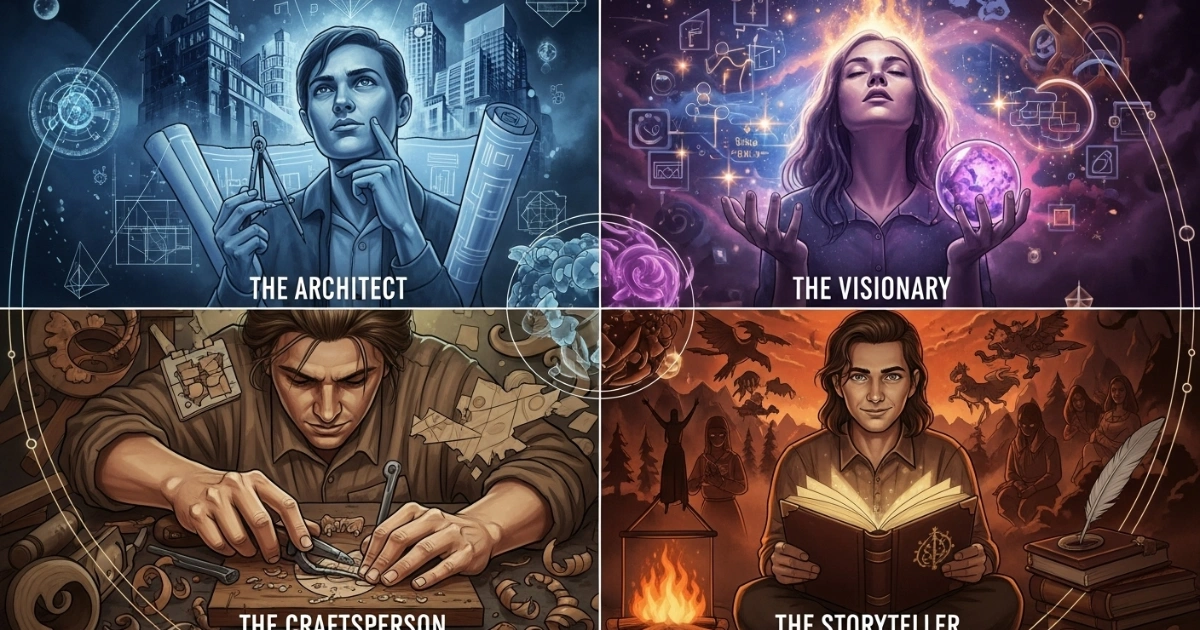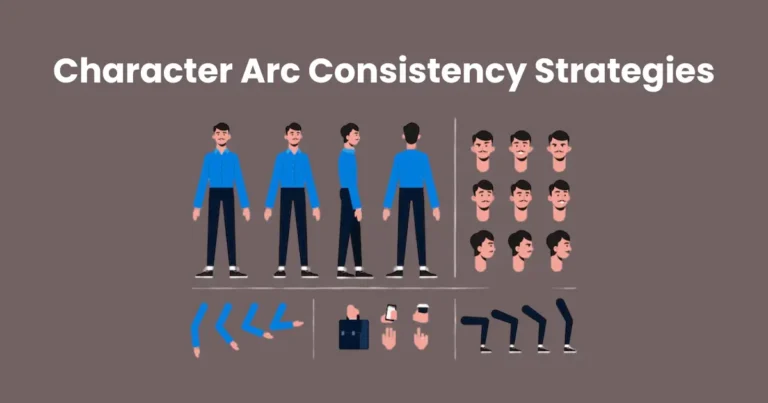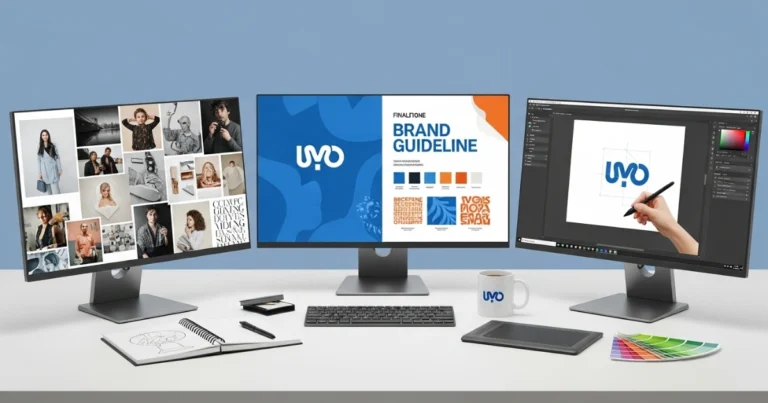Creator Archetypes: Find Your Creative Style

Contents
- 1 What Are Creator Archetypes?
- 2 The Main Creator Archetypes
- 3 How to Identify Your Creator Archetype
- 4 Leveraging Your Archetype for Maximum Impact
- 5 Overcoming Common Challenges
- 6 Real-World Examples of Creator Archetypes
- 7 How to Transition Between Archetypes
- 8 Creator Archetypes in Teams
- 9 Tools and Resources for Creator Archetypes
Understanding creator archetypes is essential for anyone looking to harness their creative potential and achieve success in their endeavors. These archetypes represent distinct creative personalities that shape how individuals approach their work, solve problems, and express their ideas. By identifying your archetype, you can align your creative process with your natural strengths, allowing you to produce work that resonates deeply with your audience. This article explores the concept of creator archetypes, their characteristics, and how you can leverage them to enhance your creativity for maximum impact. Whether you’re an artist, writer, entrepreneur, or hobbyist, discovering your archetype will empower you to create with purpose and efficiency.
What Are Creator Archetypes?
Creator archetypes are frameworks that categorize the diverse ways people engage with creativity. They help individuals understand their unique creative styles, motivations, and approaches to problem-solving. By recognizing which archetype resonates with you, you can tailor your creative process to align with your strengths, ultimately leading to more fulfilling and productive outcomes.
The Importance of Identifying Your Archetype
Identifying your creator archetype allows you to work smarter, not harder. For instance, some creators thrive on structure, while others excel in chaos. Knowing your archetype helps you create an environment that supports your creativity, ensuring you achieve your goals efficiently. Moreover, understanding these archetypes fosters collaboration, as you can appreciate the strengths of others and build complementary teams.
How Creator Archetypes Differ from Personality Types
While creator archetypes share similarities with personality types like Myers-Briggs or Enneagram, they focus specifically on creative processes. They emphasize how you approach creation, rather than your overall personality. For example, two people with the same personality type might have different creator archetypes, leading to unique creative outputs.
The Main Creator Archetypes
Below, we explore eight primary creator archetypes, each with distinct characteristics, strengths, and challenges. By understanding these, you can identify which archetype aligns with your creative style and how to maximize your creative output.

1. The Visionary
Characteristics: Visionaries are big-picture thinkers who dream up innovative ideas and bold concepts. They are driven by imagination and often see possibilities others overlook.
Strengths: Visionaries inspire others with their grand ideas and are excellent at setting ambitious goals.
Challenges: They may struggle with execution, as their focus on the future can make them overlook details.
How to Maximize Time: Pair with detail-oriented collaborators to bring your ideas to life. Use tools like mind-mapping software to organize your thoughts efficiently.
2. The Craftsman
Characteristics: Craftsmen are meticulous creators who focus on mastering their skills and producing high-quality work. They value precision and take pride in their craft.
Strengths: Their attention to detail ensures polished results that stand out in any field.
Challenges: Perfectionism can slow them down, leading to missed deadlines.
How to Maximize Time: Set clear deadlines and break projects into manageable tasks to maintain momentum.
3. The Storyteller
Characteristics: Storytellers weave compelling narratives that captivate audiences. They excel at connecting emotionally with others through their work.
Strengths: Their ability to engage and inspire makes them powerful communicators.
Challenges: They may struggle with structure or technical aspects of creation.
How to Maximize Time: Use outlines to structure stories and collaborate with editors to refine your work.
4. The Innovator
Characteristics: Innovators push boundaries by experimenting with new methods and technologies. They thrive on change and disruption.
Strengths: Their willingness to take risks leads to groundbreaking creations.
Challenges: They may abandon projects if they lose interest.
How to Maximize Time: Focus on one project at a time and set short-term goals to maintain focus.
5. The Collaborator
Characteristics: Collaborators thrive in team settings, drawing energy from group dynamics and diverse perspectives.
Strengths: They excel at fostering synergy and producing well-rounded projects.
Challenges: They may rely too heavily on others, losing their individual voice.
How to Maximize Time: Clearly define roles within teams to streamline workflows and avoid confusion.
6. The Explorer
Characteristics: Explorers are curious creators who love learning and experimenting with new ideas. They are driven by discovery.
Strengths: Their versatility allows them to adapt to various creative challenges.
Challenges: They may struggle to commit to one idea or project.
How to Maximize Time: Use a journal to track ideas and prioritize those with the most potential.
7. The Performer
Characteristics: Performers create with an audience in mind, thriving on feedback and engagement. They are charismatic and expressive.
Strengths: Their ability to connect with audiences makes their work highly impactful.
Challenges: They may prioritize audience approval over authenticity.
How to Maximize Time: Schedule regular feedback sessions to balance creativity with audience expectations.
8. The Architect
Characteristics: Architects are strategic creators who excel at planning and building systems. They approach creativity with logic and structure.
Strengths: Their organized approach ensures efficient project completion.
Challenges: They may struggle with spontaneity or creative flexibility.
How to Maximize Time: Incorporate brainstorming sessions to spark creativity within structured plans.
How to Identify Your Creator Archetype
Discovering your creator archetype involves self-reflection and experimentation. Here are practical steps to help you identify your archetype and maximize your creative time:

- Assess Your Strengths and Preferences: Reflect on what excites you about creating. Do you love brainstorming big ideas (Visionary) or perfecting details (Craftsman)?
- Analyze Past Projects: Review your most successful projects. What approach did you take? Did you thrive in a team (Collaborator) or prefer solo work (Craftsman)?
- Experiment with Different Approaches: Try working in ways that align with different archetypes. For example, create a structured plan (Architect) or explore a new medium (Explorer).
- Seek Feedback: Ask colleagues or friends how they perceive your creative process. Their insights can reveal patterns you might overlook.
- Take a Quiz: Online quizzes designed for creator archetypes can provide a starting point for self-discovery.
Leveraging Your Archetype for Maximum Impact
Once you identify your creator archetype, you can tailor your creative process to maximize efficiency and impact. Here are strategies to make the most of your archetype:

Align Your Environment with Your Archetype
Your workspace and habits should support your creative style. For example, Visionaries need open spaces to brainstorm, while Craftsmen benefit from organized, distraction-free environments. Adjust your surroundings to enhance focus and productivity.
Set Goals That Match Your Strengths
Set goals that align with your archetype’s strengths. For instance, Storytellers should focus on creating emotionally resonant content, while Innovators should prioritize experimenting with new tools or techniques.
Collaborate Strategically
No creator archetype is perfect in isolation. Partner with complementary archetypes to balance your weaknesses. For example, a Visionary can team up with an Architect to turn big ideas into actionable plans.
Use Tools to Streamline Your Process
Leverage technology to maximize your time. Project management tools like Trello or Asana can help Architects stay organized, while brainstorming apps like Miro benefit Visionaries and Explorers.
Overcoming Common Challenges
Each creator archetype faces unique challenges. Here’s how to address them to ensure you maximize your creative time:
- Perfectionism (Craftsman): Set realistic standards and use time-blocking to avoid over-editing.
- Lack of Focus (Explorer): Prioritize one project at a time and use deadlines to stay on track.
- Over-Reliance on Others (Collaborator): Develop solo skills to maintain your creative independence.
- Fear of Failure (Performer): Focus on small, achievable milestones to build confidence.
Real-World Examples of Creator Archetypes
To illustrate how creator archetypes manifest in real life, consider these examples:

- Visionary: Elon Musk’s ambitious goals for SpaceX reflect his ability to think big and inspire innovation.
- Craftsman: A master chef like Gordon Ramsay obsesses over perfecting every dish, showcasing meticulous attention to detail.
- Storyteller: Authors like J.K. Rowling captivate audiences with compelling narratives that resonate emotionally.
- Innovator: Tech pioneers like Steve Jobs pushed boundaries by embracing new technologies and designs.
How to Transition Between Archetypes
While most creators align strongly with one archetype, you can adopt traits from others to enhance your work. For example, a Storyteller can incorporate the Architect’s planning skills to structure their narratives better. To transition effectively:
- Practice New Habits: Gradually adopt the habits of another archetype, such as setting stricter deadlines (Architect) or experimenting with new mediums (Explorer).
- Learn from Others: Observe how creators with different archetypes approach their work and emulate their strategies.
- Stay Flexible: Embrace the fluidity of creativity by experimenting with different approaches as projects evolve.
Creator Archetypes in Teams
In collaborative settings, understanding creator archetypes enhances team dynamics. For example, a Visionary can set the creative direction, while an Architect ensures the project stays on track. By assigning roles based on archetypes, teams can maximize efficiency and produce high-quality work.

Building a Balanced Team
To create a balanced team, include a mix of archetypes to cover all aspects of the creative process:
- Visionary: Sets the direction and inspires the team.
- Architect: Plans and organizes tasks.
- Craftsman: Ensures high-quality execution.
- Collaborator: Fosters communication and synergy.
Managing Conflicts
Conflicts may arise when archetypes clash. For instance, a Visionary’s big ideas might overwhelm a Craftsman’s need for precision. To manage conflicts, establish clear communication channels and respect each archetype’s contributions.
Tools and Resources for Creator Archetypes
To maximize your creative time, use tools tailored to your archetype:

- Visionary: Mind-mapping tools like XMind or Miro.
- Craftsman: Editing software like Grammarly or Adobe Suite.
- Storyteller: Writing platforms like Scrivener or Google Docs.
- Innovator: Prototyping tools like Figma or InVision.
Additionally, consider joining communities or workshops to connect with other creators and learn from their experiences.
Conclusion
Understanding creator archetypes empowers you to unlock your creative potential and produce work that resonates with your audience. By identifying your archetype—whether you’re a Visionary, Craftsman, Storyteller, or another type—you can align your creative process with your strengths, overcome challenges, and maximize your time. Experiment with different approaches, collaborate strategically, and use tools to streamline your work. Ultimately, embracing your creator archetype will help you create with confidence, purpose, and impact, ensuring your creative journey is both fulfilling and successful.






